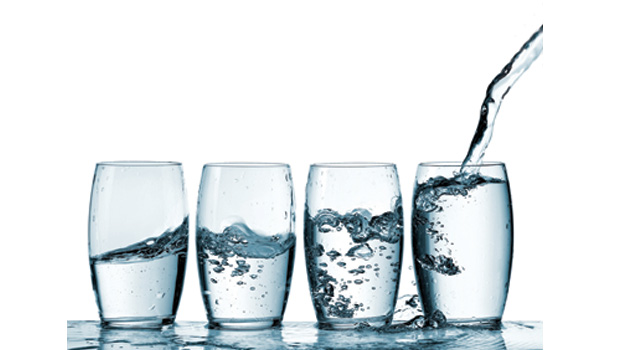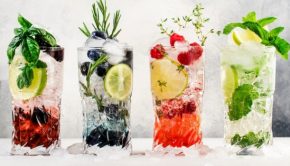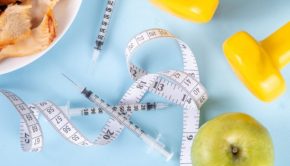SAFE DRINKING WATER
Home Systems to Purify H2O
by Jim Motavalli
Americans trust bottled more than tap water, but that confidence might work better if reversed. The Environmental Working Group (EWG) notes that the U.S. Environmental Protection Agency (EPA) monitors tap water for more than 90 contaminants, and it must meet the strict standards of the Safe Drinking Water Act of 1974. Nationally distributed bottled water, under the jurisdiction of the U.S. Food and Drug Administration, isn’t as carefully or frequently checked. A quarter of all bottled water is actually filtered tap water, reports the Natural Resources Defense Council (NRDC).
Concern about safe tap water is relatively recent—in the 1960s, for instance, people worried more about fluoridation
than contamination. But since 1990, partly driven by bottled water ads, Gallup polls have shown tap water concerns rising; 63 percent of us now worry about our drinking water “a great deal”.
Bottled water is usually safe to drink, but isn’t environmentally friendly. Plastic bottle production in the U.S. requires 17.6 million barrels of oil annually, reports the nonprofit Riverkeeper; plus the energy used to transport it to market, refrigerate it and collect the empties equals filling the bottles a quarter full of oil. Then, 77 percent of discards end up in the landfill. the Earth Day Network reports.
Retail costs range from 89 cents a serving to $8 a gallon for designer water, averaging $1.11 a gallon, compared to .002 cents per gallon for tap water.
What’s in Tap Water
Legitimate concerns about tap water exist, mostly because homes built before 1986 likely have lead in their pipes, solder and fixtures, possibly contaminating municipally sourced water. Well water is also susceptible to outside contamination from chemicals and microorganisms that must be monitored.
Because lead accumulates in stagnated water in pipes, run the water until it gets as cold as possible; up to two minutes if the taps haven’t been turned on in six hours or more. Other chemicals found in tap water include low levels of chlorine, arsenic, nitrates, atrazine, perchlorate and pathogens, reports the NRDC. Pharmaceutical products can also get into tap water, warns the World Health Organization (WHO). A recent study from the EWG and North-eastern University, in Boston, showed small quantities of toxic chemicals in tap water serving 15 million Americans in 27 states.
Filter Options
Filters can allay tap water worries from municipal or well supplies. Several types—tap-mounted, under-sink and pitchers—are effective and affordable, ranging from $20 to $300. Seek filters certified by the National Sanitation Foundation (NSF) testing agency that check for specific contaminants of concern.
NSF-42 coding certifies filters that improve water taste and remove both chlorine and particulate matter. NSF-53 is more stringent and requires removal of metals and harmful chemicals. The highest standard, NSF-401, covers filters that eliminate bacteria, pesticides/herbicides and residue from drugs like ibuprofen.
Activated carbon filters, which require regular replacement cartridges, remove large particles like sediment and silt. Reverse osmosis filters remove dissolved inorganic solids (including salts) by pushing tap water through a semi-ermeable membrane. Ultraviolet water purification is effective at treating bacteria and viruses, but not contaminants such as chlorine, volatile organic compounds or heavy metals.
least expensive, although cartridges add to the cost and are only effective for processing about 40 gallons each. To save money, DIY products allow individuals to refill used cartridges with new activated charcoal. Filter pitchers need to be cleaned regularly because the charcoal can leak, producing mildew, calcium and grime.
Faucet-mounted models are easy to install and can be switched easily from filtered to unfiltered water (e.g., for washing up). Under-sink filters and cartridges are effective for up to 200 gallons, but more challenging to install. Connecting to refrigerators and ice makers makes installation more complex, and leakage can be an issue; countertop filters take up space, but are less likely to clog.
Consumer Reports says reverse osmosis filters are effective at removing contaminants, but can operate slowly, consume cabinet space, need periodic cleaning with bleach and create three to five gallons of wastewater for every gallon filtered.
WHO indicates that conventional municipal water treatment processes can remove about half of the compounds associated with pharmaceutical drugs. Advanced treatment like reverse osmosis and nanofiltration can be more efficient, removing up to 99 percent of large pharmaceutical molecules.
The first step is a water test. Some state and local health departments offer free test kits and they are also sold at hardware stores. Certified laboratories test tap water samples, with information often available from the local water provider.
Find a state-by-state list of certified labs plus program contacts at Tinyurl.com/DrinkingWaterCertificationInfo. The EPA Safe Drinking Water Hotline is 800-426-4791.
Jim Motavalli, of Fairfield, CT, is an author, freelance journalist and speaker specializing in clean automotive and ther environmental topics. Connect at JimMotavalli.com.




























